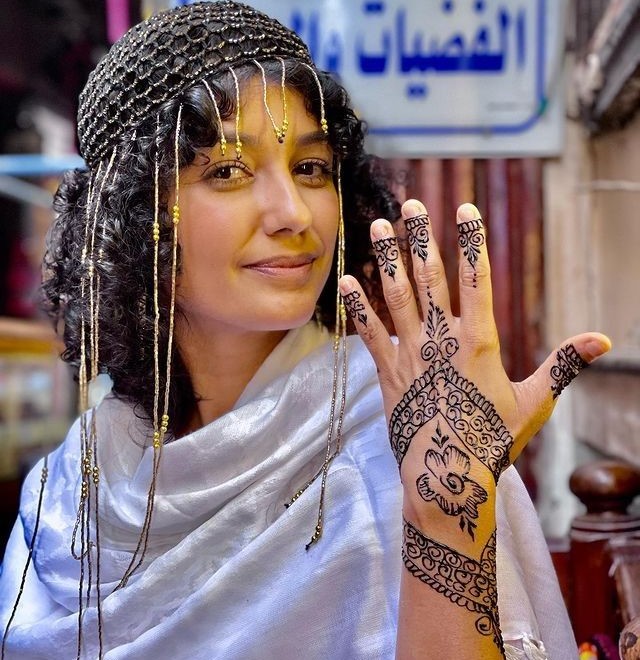Henna is an age-old shrub that has elegantly worked its way into history and literature, much like the vines it’s used to paint. As an art, it’s brought alive through the opinions of Pharaohs and written into the memoirs of Galileo’s company, featured in anything from the works John Baptist Porta to Scheherazade’s hazy and dreamlike danse macabre to gloried Indian ceremonials. Truly, there are very few cloisters of Mediterranean, Middle Eastern, and South Eastern cultures that don’t feature henna as a recurring art.

Egyptian Henna
Egypt’s no exception to this rule – rather, Egypt is the first recorded birthplace of henna. Several ancient Egyptian rulers have been found with henna-stained hair, most famously Rameses II, whose mummified remains included a vivid bed of red-orange hair that stood the test of time. It was also commonly used by the ancients on nails and skin, little adorations that were used on different occasions and directly prior to mummification.
Henna is formidable, if only for a history spanning thousands of years. Most commonly, it is powdered or used for dye, harvested young and in bush form. Despite an original leaf-color of green, an array of pigments can be derived from the henna plant, from orange-yellow, to orange-red, to an ox-blood, brick red.
The plant lent its name to both the dye-paste and essential oils that were a consequence of its use, and soon enough, those three were synonymous in more than one culture. The word is derived from ancient Arabic: henna (or: hinna; khanna), believed to have been given to the plant by Arabic speaking Persians.
To go even further, the Egyptian hieroglyphic name for henna is “henu,” a striking similarity that scholars insist might have had something to do with its origin.
Today, henna plays several roles in Egypt, all fond. Beach kiosks on Sharm El Sheikh shores specialize in magnificent body art, all with some dye, a bottle cap, and the patience to paint with a toothpick. Women walk around with gardens of henna tracing up their forearms for beauty’s sake, while others use it to stain nails.
Perhaps most telling is the affectionately named Henna Night: an Egyptian bachelorette party, where the bride-to-be and her closest girls indulge in a night of dance and art, where the only rule that remains is beauty.
Though prolific in Egypt, henna has made a home in cultures less familiar with the art form. Tattoo shops across the globe have integrated this temporary artistry into their active skillset, contributing an even more expansive visual gallery to an already-ancient craft. Those who are fickle lovers of commitment, who don’t want the needle-sharp finality of a tattoo, have begun to orbit henna as an exotic alternative.
Henna is an endearing inheritance, one could say. A gift from the ancients to the playful, beauty-seeking Egyptian.




 And then Add to Home Screen.
And then Add to Home Screen.